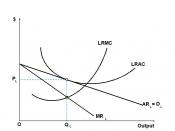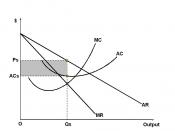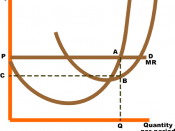A firm is the smallest unit of production, the objective of its performance is to maximize the economic profits which can be achieved by minimizing cost of production or maximizing the total revenue. The prospects of profit for a firm are further guided by market conditions. In a market where a firm has to sell its output there may be competitive, monopolistic or oligopolistic conditions. Each market type has a different impact on the price and quantity sold by the firm. My paper focuses on the perfectly competitive type only; the reason lies in that it is the easiest of the market structure models to start out with. This paper first looks at some high points that running through this model, and then uses the covered principles and ideas to explain the impact of satellite tracking system on the economic performance of a typical firm of American trucking industry.
Main assumptions of PCMM
Perfect competitive market model contains the following four main assumptions.
1) A large number of buyers and sellers, each acting independently, they are too small to influence the market. This means that each firm has only a small market share of total supply and takes the price of the product as beyond its control. It is therefore a price-taker.
2) The market produces a homogenous or standardized product where the consumers cannot distinguish between products produced by different firms.
3) Market participants have full knowledge of the economic and technical data relevant to their decision- making.
4). There is free entry and exit of firms in response to profits in the industry. Thus if firms are making positive economic profits, it acts as a signal to others to open up similar firms producing similar products. If firms are losing money, making negative economic profits, then, firms will...


